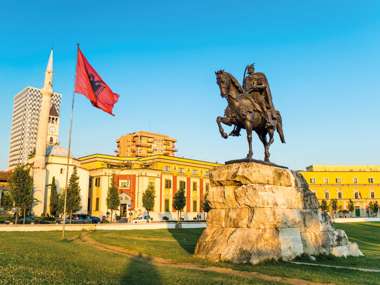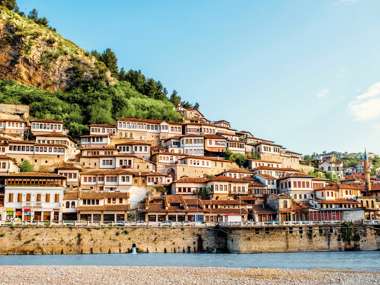A personal account from Albania
It’s quite unbelievable that since 1991, after so many brutal years in communist hands, it has taken this long for a country steeped in so much natural beauty to come to the forefront of tourism. Albania plays host to some amazing attractions, from staggering mountain landscapes and almost forgotten archaeological sites, to villages and towns where time seems to have stood still.
The coastal towns of Vlorë and Sarandë are in line to compete with many of those in the Mediterranean. The towns have slowly developed to welcome tourists yet still exude a sleepy seaside village charm. By day they create a lovely backdrop against the turquoise seas; by night the lights of the town begin to twinkle along the port and dot the mountainside like stars.
Even transferring from one destination to another is hardly dull; astounding views along the Albanian Riviera make for great drive-by viewing. There is even the opportunity for a few memorable photo stops along Llogara Pass, where isolated fortresses protect Riviera bays and mountain peaks touch the clouds.

Albania boasts three UNESCO World Heritage sites. The first two are the fortified historical towns of Gjirokastra and Berat, both extraordinarily well preserved and have been continuously colonised since ancient times. Gjirokastra shows great examples of Turkish inspired architecture from Ottoman invasions. The castle standing on the hillside, protectively watches over the town below and is filled with vestiges of World War I. Berat, which was my personal highlight, is one of the oldest towns in Albania and its castle, to this day, remains inhabited by local families. The quarters that make up the old town are paved with white washed cobblestoned roads and alleyways, polished smooth by the centuries of life that have trailed and trudged over them.
Albania’s third UNESCO site, Butrint, is an incredible settlement which has seen colonies rise and fall throughout the ages, from the Greeks to the Romans – who used the area as an important part of their trade route. The magnificent ruins offer endless spots to explore and yet they are only 4% excavated with so much more still to be discovered. It’s not hard to imagine why these beautiful sites fall under UNESCO protection, standing strong after so many centuries they should continue to be protected for generations more to come.
The same can be said in regards to Apollonia, partly destroyed in the earthquake of 1961, it still remains a beacon of Albania’s illustrious past. A lot of work has gone into preserving and restoring the ruin to the splendour that it once was, and it truly is a site to see.
Our final stops were the two biggest cities in Albania: Durrës, the country’s biggest seaport town, and Tirana, a lively city that is brought to life by an array of cultural museums and boulevards still home to remnants of the country’s communist past.
This is without doubt an incredible time to visit; when Albania’s culture, beauty and history still remain practically undiscovered and unspoilt. However, this time is undoubtedly precious because Albania is making a name for itself and word is out!”





